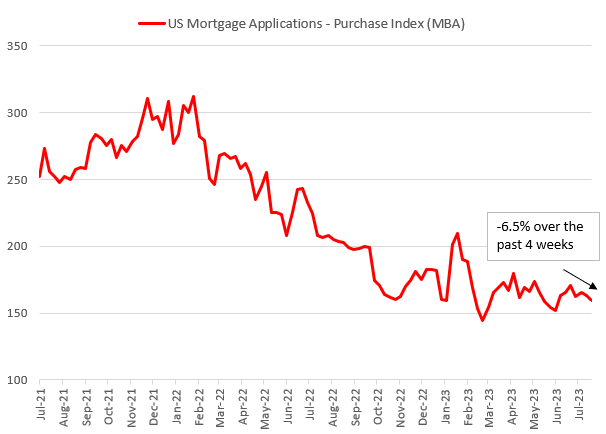Navigating The Chinese Market: The Struggles Of BMW, Porsche, And Other Auto Brands

Table of Contents
Intense Competition and Local Brands
The Chinese auto market is a fiercely competitive landscape, with the rise of domestic automakers posing a significant threat to established international players.
The Rise of Domestic Automakers
Chinese automakers like BYD, Geely, and Nio are rapidly gaining market share, challenging the dominance of international brands. Their success stems from several key factors:
-
Superior understanding of local consumer preferences: Domestic brands possess an inherent advantage in understanding the nuances of Chinese consumer tastes and preferences, leading to the development of vehicles tailored to the local market. This includes features, designs, and technologies specifically appealing to Chinese drivers.
-
Aggressive pricing strategies and government support: Chinese automakers often leverage aggressive pricing strategies, often supported by government initiatives, making their vehicles more affordable and competitive. This pricing strategy directly impacts the market share of higher-priced international brands.
-
Rapid technological advancements, especially in electric vehicles (EVs): Chinese automakers are at the forefront of electric vehicle innovation, rapidly developing and deploying cutting-edge EV technologies, including battery technology and autonomous driving features. This technological prowess is a key driver of their market share growth, particularly in the rapidly expanding EV segment of the Chinese auto market.
Price Wars and Market Segmentation
The Chinese market is highly price-sensitive. This necessitates international brands engaging in price wars or risk losing significant market share to more aggressively priced competitors. Successful brands adopt effective market segmentation strategies to target specific consumer demographics:
-
Need for localized pricing strategies: International brands must develop pricing strategies specifically tailored to the Chinese market, considering factors like income levels, consumer expectations, and competitive pricing.
-
Importance of offering diverse model ranges catering to various price points and preferences: A diverse product portfolio spanning various price points and features is essential to cater to the vast and diverse preferences of Chinese consumers. This strategy allows brands to compete effectively across various market segments.
-
Challenges in maintaining brand premium amidst competitive pricing: Maintaining brand premium and luxury positioning while competing on price is a significant challenge. Striking a balance between brand image and competitive pricing is crucial for long-term success in this market segment.
Navigating Regulatory Hurdles and Infrastructure
Navigating the Chinese regulatory environment and adapting to its evolving infrastructure are critical for success in the Chinese auto market.
Stringent Emission Standards and Regulations
China's increasingly stringent emission standards and regulations present significant challenges for international automakers. Meeting these standards requires considerable investment and adaptation:
-
High costs associated with meeting stricter environmental standards: Compliance with stringent environmental regulations necessitates significant investments in research and development, leading to increased production costs.
-
Need for significant investment in R&D for electric and hybrid vehicles: The push towards electric and hybrid vehicles requires substantial R&D investment to develop and produce vehicles meeting the evolving emission standards.
-
Complexity of navigating ever-evolving regulatory landscape: The Chinese regulatory environment is constantly evolving, requiring continuous monitoring and adaptation to ensure ongoing compliance.
Charging Infrastructure and EV Adoption
The burgeoning EV market in China requires a robust and reliable charging infrastructure. However, this infrastructure is still under development in certain regions:
-
Concerns about range anxiety and charging infrastructure availability: Range anxiety, stemming from concerns about charging infrastructure availability, remains a barrier to wider EV adoption.
-
Need for strategic partnerships to build and expand charging networks: Collaboration with local partners to expand charging infrastructure is critical to alleviate range anxiety and encourage greater EV adoption.
-
Government incentives and policies play a crucial role in EV adoption: Government policies and incentives significantly influence the rate of EV adoption. Understanding and leveraging these policies are essential for success in the EV sector of the Chinese auto market.
Understanding Unique Consumer Preferences and Cultural Nuances
Understanding the unique preferences and cultural nuances of Chinese consumers is paramount to success in this market.
Brand Perception and Luxury Positioning
Building a strong brand image and maintaining a desirable luxury positioning is crucial, especially in a market saturated with both domestic and international brands.
-
Importance of tailored marketing strategies that resonate with Chinese consumers: Marketing strategies must be carefully tailored to resonate with the specific preferences and values of Chinese consumers. This includes understanding the cultural context and tailoring messaging accordingly.
-
Understanding the evolving preferences of younger, tech-savvy consumers: Younger Chinese consumers are highly tech-savvy and demand innovative features and technologies. Brands must adapt to these evolving preferences to remain competitive.
-
Maintaining brand exclusivity amidst competitive pricing pressures: Maintaining brand exclusivity while competing on price is a significant challenge. Balancing price competitiveness with brand prestige is essential for success in this market.
Digital Marketing and E-commerce
China's reliance on digital platforms for marketing and sales necessitates a robust online presence and a well-developed e-commerce strategy.
-
Adapting to the dominance of social media and mobile commerce in China: Social media and mobile commerce are dominant forces in the Chinese market. Brands must adapt their marketing strategies to leverage these platforms effectively.
-
Strategic partnerships with major e-commerce platforms like Alibaba and JD.com: Partnering with leading e-commerce platforms is essential for reaching a significant segment of the Chinese consumer base.
-
Need for a localized and culturally sensitive digital marketing approach: A culturally sensitive and localized digital marketing approach is essential for engaging Chinese consumers effectively.
Conclusion
Successfully navigating the Chinese auto market requires a multifaceted approach. International brands like BMW and Porsche face intense competition from domestic players, stringent regulations, and unique consumer preferences. Understanding the nuances of the Chinese auto market, adapting to its rapid changes, and investing strategically are key to long-term success. To thrive in this dynamic environment, automakers must prioritize localization, embrace digital strategies, and continuously innovate to meet the demands of the ever-evolving Chinese auto market. Don't let the challenges deter you – understanding the intricacies of the Chinese auto market is the first step toward success.

Featured Posts
-
 Nyt Spelling Bee Puzzle 387 March 25th Strategies Hints And Answers
Apr 26, 2025
Nyt Spelling Bee Puzzle 387 March 25th Strategies Hints And Answers
Apr 26, 2025 -
 The Deeply Unfair Debate Newsoms Policy On Transgender Participation In Sports
Apr 26, 2025
The Deeply Unfair Debate Newsoms Policy On Transgender Participation In Sports
Apr 26, 2025 -
 Nyt Spelling Bee Solution And Hints For February 26th Puzzle 360
Apr 26, 2025
Nyt Spelling Bee Solution And Hints For February 26th Puzzle 360
Apr 26, 2025 -
 Fox News Faces Defamation Lawsuit From Ray Epps Over Jan 6th Reporting
Apr 26, 2025
Fox News Faces Defamation Lawsuit From Ray Epps Over Jan 6th Reporting
Apr 26, 2025 -
 Indonesia Weighs Rare Rice Exports To Strengthen International Relations
Apr 26, 2025
Indonesia Weighs Rare Rice Exports To Strengthen International Relations
Apr 26, 2025
Latest Posts
-
 Los Angeles Palisades Fire A List Of Celebrities Whose Homes Were Damaged Or Destroyed
Apr 26, 2025
Los Angeles Palisades Fire A List Of Celebrities Whose Homes Were Damaged Or Destroyed
Apr 26, 2025 -
 The China Factor Analyzing The Difficulties Faced By Bmw Porsche And Other Auto Brands
Apr 26, 2025
The China Factor Analyzing The Difficulties Faced By Bmw Porsche And Other Auto Brands
Apr 26, 2025 -
 The Growing Problem Of Betting On Natural Disasters Focus On Los Angeles
Apr 26, 2025
The Growing Problem Of Betting On Natural Disasters Focus On Los Angeles
Apr 26, 2025 -
 Los Angeles Wildfires A Case Study In Disaster Speculation
Apr 26, 2025
Los Angeles Wildfires A Case Study In Disaster Speculation
Apr 26, 2025 -
 How Middle Management Drives Company Growth And Employee Development
Apr 26, 2025
How Middle Management Drives Company Growth And Employee Development
Apr 26, 2025
